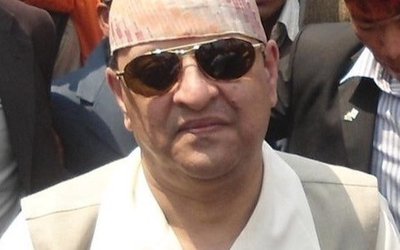More on Opinion





The thong forest beaches of Copacabana are not exactly the kind of meditative retreat our Rishis of yore would have recommended. However, checked into an eponymous hotel located there, I had little choice but to let the Atlantic waves washing onto its western shores take me east to the Nepali antipodes. The parallels with a failing Rio+20 and a failed CA in Nepal are striking enough to merit some reflections. Indeed wags are calling the jamboree ‘Rio minus 20’, essentially forcing the environment community and its well-wishers to go, as they say in Kathmandu, “back to Mangalman”. With a collapsed CA and the simultaneous collapse of the 12-point Delhi Deal as well as the Loktantrick roadmap of the Seven Parties Alliance the King acceded to, Nepal too is back to where it was in 2005. Moreover, it is forced to look back from there to the failed 1990s and ask uncomfortable questions about political accountability and crimes against governance that the parties and their leaders have so far skillfully evaded.
As of press time, no major developed country leader will be attending Rio+20. In 1992 Bush the Father, the unquestioned leader of the world’s only superpower after the collapse of the Soviet empire and the hubristic definer of a “New World Order”, dragged reluctant industrial country leaders to Rio to sign landmark deals such as the one on climate change that eventually resulted in the Kyoto Protocol a few years later, rights of indigenous people over their land and the issue of preserving bio-diversity. Sadly, the Western political agenda today is how to deflect criticisms for the failure to meet the commitments made in 1992 and to backpedal on issues such as “right to food”, technology transfer to developing countries and social and environmental “accountability”, especially of Western multinational corporations. In short, it is to quietly bury what the victorious West had magnanimously agreed to take the lead in solving for the rest of humanity. With the Euro and American debt crises as well as recession plaguing yesterday’s victors, there are no initiatives from them to fire the imagination: there is only the buttressing of their short-term economic interests with bracketed texts. Rio promises to fizzle out just as Copenhagen did a few years earlier, forcing the global environmental community to literally “go back to the drawing board” as far as campaigns to save the planet are concerned.
It is not that the EuroAmericans did not have the resources to meet their commitments of 1992: rather they chose in their hubris to hemorrhage themselves economically in Iraq and in Afghanistan under the myopic leadership of Bush the Son and his court jesters in the “coalition of the willing”. Even earlier, they expanded their empire eastward, bringing into the NATO and EU fold erstwhile Soviet satellites that are even now least prepared to bear the responsibilities of membership. Their destabilizing adventurism continues in Libya and Syria without a thought for the historic consequences that will follow in their wake. Destabilizing Nepal through an equally hubristic Mughlani Sahu – anxious to become a regional power by piggy-backing on the Americans – to explore imposing a Kennan cordon sanitaire on a rising China since the Dhaka SAARC summit in November 2005 was but a mere pawn move in the larger canvas. Nepalis now have to live with those consequences.
Proof of all of this, if more were ever required, has recently been made available in a chapter by India’s S. D. Muni in a book edited by a former Canadian ambassador to India and Nepal (Nepal in Transition, Cambridge University Press, 2012). A reading of the timeline he presents as well as the footnotes detailing his own dealings with RAW spooks (and especially how the soon-to-be president of India Pranab Mukherjee’s plea to Girija Koirala to accept the Karan Singh mission compromise was undercut by Sham Sharan and the spooks) demonstrates how India used the Prachanda-Baburam Maoist leadership as well as Koirala for a regime change in Nepal. Unfortunately, with the ignominious collapse of the CA, the entire architecture based on the 12-point Delhi Deal too has become rubble.
There are as many theories floating around about how and why the CA collapsed as there are tabloids, even though senior leaders and Western diplomats were quite confident of a last minute deal that would pass a “preamble” of good intents as a “frame of a constitution” and allow it to morph into a parliament. The first thing to realize is that the CA, though touted as the most inclusive in Nepal’s history, had already collapsed from Day 1 four years earlier when it supinely passed the motion – tabled by a non-member and forbidding any discussion on its content – to declare Nepal a secular, federal republic. It spoke nary a peep when Koirala flouted all norms to continue as head of state and government for four months subsequently, and became a rubber stamp for frivolous amendments. It, and its Speaker, behaved no differently on the last day, fruitlessly waiting for an ukase that never came from the oligarchy of half a dozen party warlords.
The party oligarchs themselves had lost control of their parties, each one of which was fractured on personality, ideology and ethnicity caucus lines; and no one was sure what indiscipline would reign if voting was allowed. The Delhi deal and the Seven Party roadmap having already collapsed, the party leaders were wholly in the fog regarding the intents of their Mughlani and Western godfathers, conflicting as the signals were that emanated from their INGO and intermediary acolytes. (The Mughlani plan for a “united Tarai and fragmented hills” as the basis of federalism was already a non-starter with recently awoken parties and their leaders.) And there was a Maoist prime minister who only knew what the textbook said of what Lenin did between February and November 1917 that he was determined to replicate in Nepal, especially the July revolt that wiped out the moderate social democrats and the dissolution of the CA with all powers shifting to the Soviets!
Where next? From Rio, a clear indicator emerges that the notorious Washington consensus on neoliberal economic fundamentalism in the aftermath of the collapse of the Berlin Wall is socially disastrous and politically unviable for much of the South. Indeed, as the “virtual money” Ponzi schemes in the US markets and much of the Western world indicates, the approach of unbridled capitalism is a social and eventually economic disaster for the West as well. For social activists and environmentalists, there is therefore a need to go back to the fundamental basics – indeed as far back as 1848 – as they search for a more equitable and just global order.
Similarly for Nepal, it is by now painfully obvious that revolutionary change imposed by party oligarchs is neither feasible nor desirable, prone as the process is to grave misfiring and hijacking by the most unscrupulous of the political class. The CA collapsed primarily on the issue of federalism (which no party is still able to describe, let alone define), leaving in its wake the emergence of racism and racial hatred for the first time in Nepal to a degree never before experienced. One shudders to think what may emerge with secularism and the election of a head of state in the days ahead as narrow electoral politics takes its toll.
What is required therefore is less hubristic, everyday evolutionary change within the “flower garden nationalism” of Prithvi Narayan Shah. For that, reverting back to the 1990 constitution would be a practical means to get out of the current mess and to re-engage with society for change from below. Given that there is no legal or practical basis for holding fresh elections at all with the collapse of the CA or under the also-collapsed interim constitution, the democratic framework of 1990 would at least allow new elections to be held for new leadership at national, district, village and municipal levels. These were elections that were thwarted in April 2006 with Mughlani spooks prodding Girija Koirala to revive a dead parliament killed by his own party as the Muni chapter mentioned above indicates. Loktantra was never the democracy it claimed to be, but only its shadow manipulated by spooks of every order. It is time to give Nepal back to the Nepali people: that would do a lot of good to the self-styled “international community” as well.






